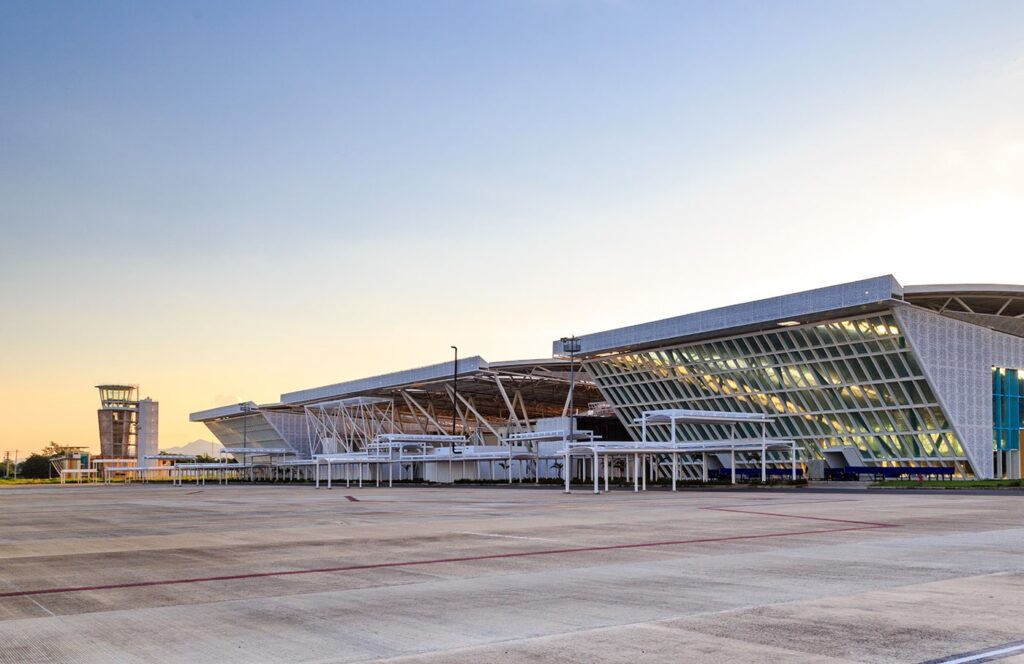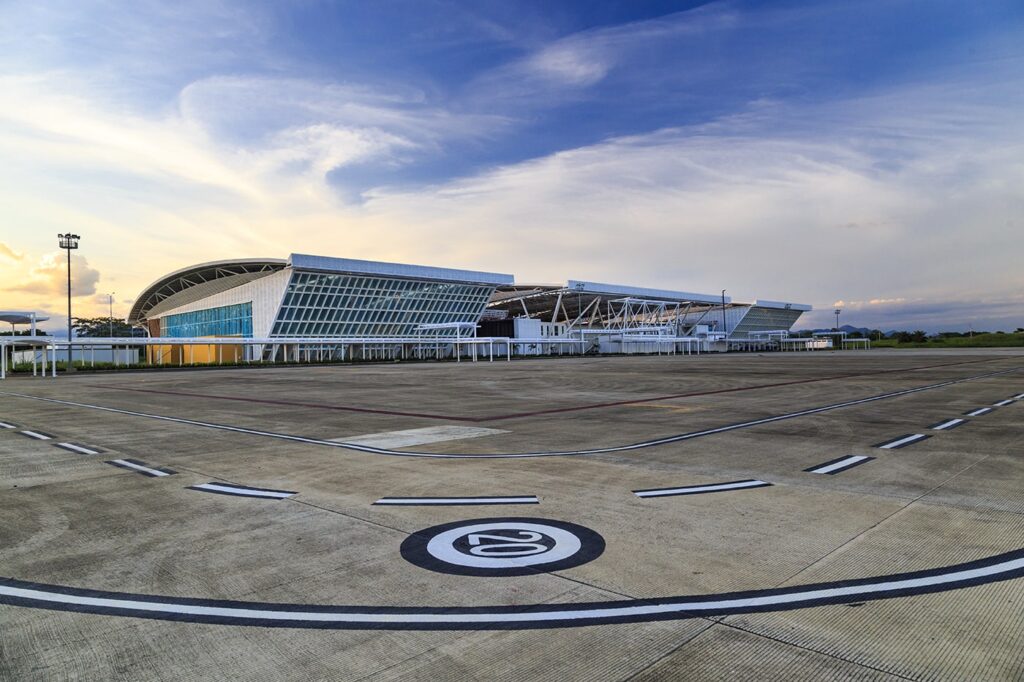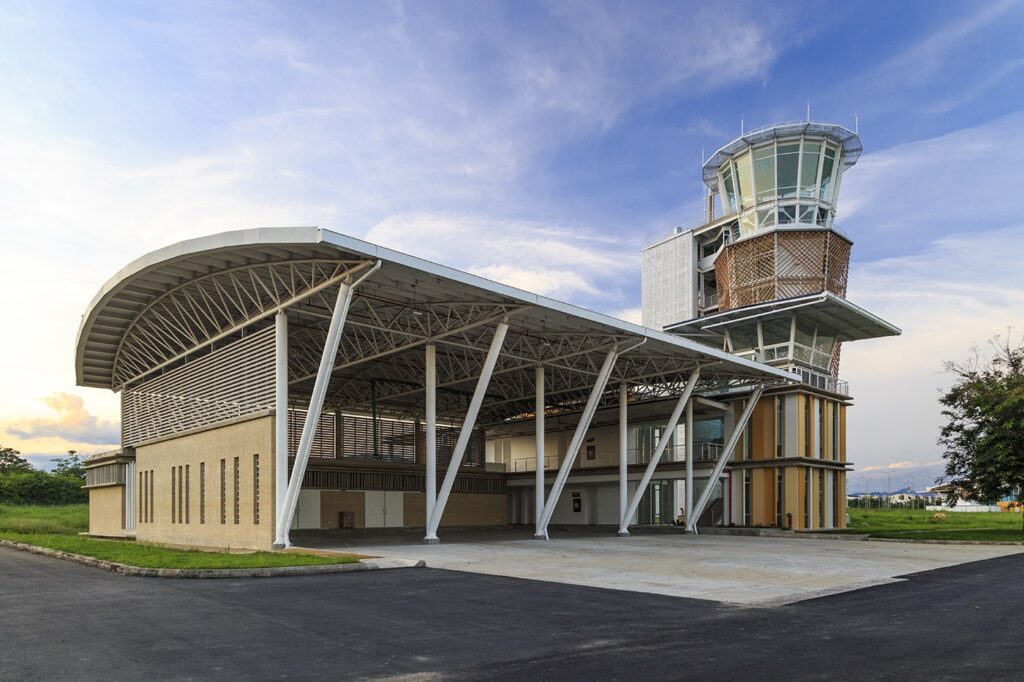El Alcaraván Airport is part of a project led by the National University of Colombia for the Civil Aeronautics Authority, aimed at renewing the national airport system. This initiative seeks not only to facilitate air travel but also to create spaces that foster connection—with oneself, with others, and with the surrounding environment and culture.

The project includes a control tower, a new fire station, and a passenger terminal, all integrated with the existing airport through a parking area designed as a green, temporary-use space. This parking connects to a body of water through educational trails among native vegetation, culminating in an entrance plaza featuring a chapel and the terminal’s arrival platform, creating a network of recreational spaces for the community.

The airport’s composition is based on an assembly of functional and constructive subsystems: courtyards, services, activity spaces, vertical and horizontal circulations, and enclosures—all designed for flexibility, adaptability, comfort, and efficiency. The central module houses counters, offices, and airport services; the lateral modules contain arrival and departure halls, designed for future expansion as needed.

Access points open onto courtyards that highlight the surrounding landscape, while an internal circulation spine integrates commercial spaces and technical networks, supporting the operational core of the complex.

The building envelope operates as a bioclimatic system: introducing natural light, promoting cross-ventilation and air convection, and harvesting rainwater. These strategies are complemented by courtyards, conceived as social and commercial hubs contributing to the airport’s environmental and economic sustainability.
The main structure, formed by large-span trusses, also serves as skylights, bringing indirect light and enhancing natural ventilation.

This airport model adapts to diverse topographical, environmental, and cultural contexts. Each location introduces specific cultural expressions: in Ibagué, music and rhythm; in Yopal, the woven traditions of chinchorros and llanero hats—concepts developed through local co-creation processes.


